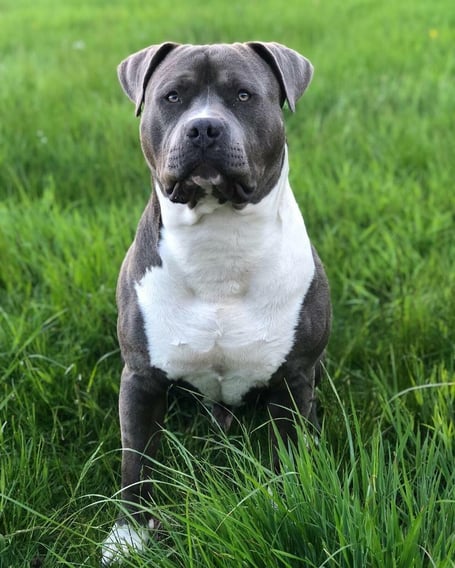As most readers will be aware, the American XL bully is a type of dog that has hit the headlines recently – but for all the wrong reasons.
More than half of the 10 fatal dog attacks in the UK last year involved an XL bully, up from four fatal attacks in 2021, two of which involved this type of dog.
These huge animals, which can weigh almost 10 stone, were also involved in at least two of the five deaths recorded this year.
A man’s death in Staffordshire on September 14, after he was attacked by two suspected XL bully dogs, was the tipping point for the UK Prime Minister to get involved.
Rishi Sunak has ordered ‘urgent work to define and ban’ XL bullies before the end of the year, although fears of a mass cull were subsequently allayed by the UK’s Chief Vet who outlined the exemption rules that are already in place under the Dangerous Dogs Act 1991. These include the requirement for a ‘banned’ dog to wear a muzzle in public and to be neutered.
Aside from being a political ‘hot potato’, there are growing numbers of people who think that the XL bully is an inherently dangerous dog and that it is genetically predisposed towards aggressive behaviour.
What is certain is that these dogs are related to the American pitbull terrier which was banned in the UK in 1991. It can’t be disputed that being bitten by a strong, powerful dog is going to be more serious than being nipped by a diminutive Jack Russell.
The nature vs nuture debate is also very relevant to the XL bully because a significant number of breeders and owners, some linked to organised crime, are deliberately training their dogs to be aggressive.
They want a dog that looks scary – a so-called status symbol that will intimidate people – and that can be used as a ‘weapon’ if necessary.
But calls to ban XL bullies may be misguided, and many dog experts believe that doing so will merely compound existing poor legislation, namely the Dangerous Dogs Act.
Another issue is that XL bullies are not recognised by the Kennel Club in the UK as a specific breed, and so identification comes down to measurement and shape of head, and other physical characteristics.
The Dog Control Coalition Group is made up of organisations such as the British Veterinary Association, the RSPCA, Battersea Dogs and Cats Home and the Dogs Trust.
It issued a statement in response to the growing political focus on bully XLs: ‘We are all incredibly concerned about the rising number of dog bite incidents and the biggest priority of everyone involved is to protect the public. Thirty two years of the Dangerous Dogs Act, which has focused on banning specific types, has coincided with a troubling increase in bites and fatalities which shows that this approach simply isn’t working.
‘Sadly, the increased popularity of American XL bullies has made them valuable commodities, resulting in irresponsible breeding, rearing and ownership, which can all contribute to an increased likelihood of aggression in dogs, regardless of breed.
‘However, the view of the Dog Control Coalition Group is that the solution is not banning more types.
‘Instead, the government needs to focus on the improvement and enforcement of current breeding and dog control regulations, and on promoting responsible dog ownership and training.’
These organisations have campaigned for some time against breed-specific legislation and believe that ‘deed not breed’ should be the main priority. They are also concerned that undesirable owners will simply turn to other large dogs if the XL bully is banned, with mastiffs, rottweilers and dobermans next in line for inappropriate breeding and training.
The ManxSPCA endorses calls for tighter legislation around the breeding and selling of puppies, and hopes that this can be achieved once the long-awaited Animal Welfare Bill is passed into Manx law.
It is also aware that XL bully puppies have been brought to the island recently from the UK, and would urge anyone owning these to ensure that they are neutered and spayed as soon as possible to ensure the XL bully ‘problem’ is controlled before new legislation is introduced.


.png?width=209&height=140&crop=209:145,smart&quality=75)

.jpeg?width=209&height=140&crop=209:145,smart&quality=75)
Comments
This article has no comments yet. Be the first to leave a comment.